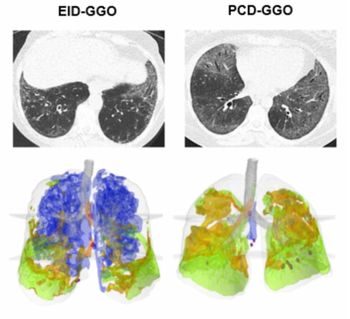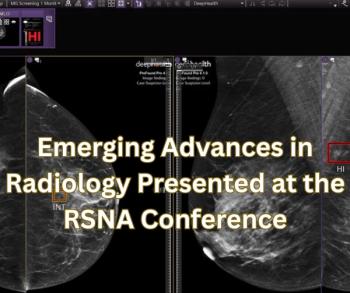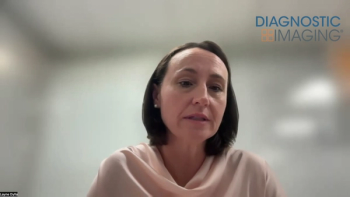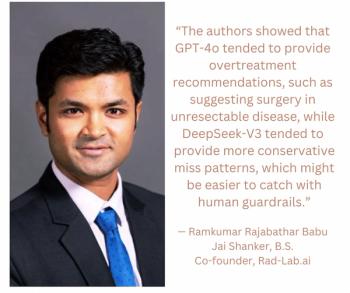Don’t Hate on the Flex Radiologists
While teleradiologists with flexible schedules may be the target of jealousy and vitriol on social media, the opportunities for improved work-life balance and increased flexibility are welcomed by others.
Prowling my radiology social media, I saw someone inquire about flexible schedule teleradiology, which involves one’s ability to log in at will to read cases without being tied to any particular schedule. I forget when I first heard the nickname “flex rad,” and for all I know, I made it up. Regardless, the term seems to have caught on in radiology circles.
As I have written before, if you are looking for sourpusses, social media rarely keeps you waiting, let alone disappoints entirely. The first radiologist who responded to the post did so not to offer his guidance but to take a swipe at the poster for wanting to have a flexible schedule.
That grinch was not alone (although others in that thread, last I checked, had better social graces). There are plenty of radiologists and, of course, other physicians who show disdain, disgust, and, yes, even hate for the flexers.
One finds many rationales for that negativity. If I wandered the halls at RSNA’s annual meeting in a few weeks and asked a bunch of attendees for their thoughts on the matter, I could probably fill a blog with them.
Off the top of my head, envy would be high on the list. Some rads who don’t have such flexible schedules surely wish they did, but don’t want to take the pay cut that would come with stopping their nighttime/weekend work. Alternately, they might be entrenched in their current jobs for other reasons. If you see someone living a life you wish you had, you might want to vilify that person.
Not everyone with that kind of envy will own up to it of course. Consciously or otherwise, it gets buried under other, more noble-sounding excuses: “Flex rads cheapen our profession.” “They will make it easier for corporate medicine to own us all.” Lest it need saying, I am sure some folks genuinely have these sentiments without envy as an underlying motivator.
Another source for anti-flex sentiment is a hidebound worldview with the perception that a doc should pay his or her dues with undesirable schedules before graduating to better ones, if ever. Physicians of yesteryear groused when younger generations of resident got protective limits on their working hours. Rads who came up in a world where you “built a practice” by putting in your nights and weekends, or adhered to anybody’s schedule but your own, might simply view flex work as insufficient commitment to the field.
Whatever their reasons, the “flex is bad” crowd isn’t about to have their opinions changed any time soon, certainly not by this blog.
That said, they might try to spew a little less venom over the matter. The flex rads aren’t going away anytime soon either. If seeing such people happily go about their business makes you eat your kishkes out, and you can’t stop them from doing it, you might as well come up with ways to make it bother you less or at least get less visibly triggered by them.
Let us recall how flex radiology became a thing. We had too much imaging and too few people to get it interpreted, coupled with technology that enabled the work to get done by anybody with an Internet connection. That trend hasn’t stabilized, by the way, so there is no expectation it will reverse itself. The flex-enabling factors are, in fact, increasing.
There were precursors to flex. Groups tried internal moonlighting wherein members opted in for hours above and beyond their obligations. Stuff got outsourced, whether to locums or telerad companies. Scheduling remained in the picture for most of that. You couldn’t just read cases when you felt like it. The folks with the excess work wanted you to be on the hook for being ready to field phone calls, take STAT cases, etc. as they came up.
A certain number of rads didn’t like that trade-off, especially those who already had jobs and were doing this as a side gig. Suppose I am working 45 hours per week and have a decent array of other things in my life. However, I know I regularly have bits of time here and there that I could productively fill. I just don’t know when they will happen.
Accordingly, if you tell me I can log in to read cases whenever it suits me, I am your huckleberry. If you make a big deal out of my having to set up and adhere to a schedule in advance, I will pass. Figure that there might be hundreds of other rads like me, and that is a ton of extra work that will be done if you allow us to flex. It’s not a big surprise that the industry, when it got hungry enough for rads, finally found ways to make this feasible.
There is plenty of variability in the flex universe by the way. Some outfits, reasonably, have expectations of a minimum productivity level for things like credentialing you or paying your med mal insurance. Others have different tracks depending on how flexible you want to be. If you want to sign on and read cases whenever you like, you get paid less than if you agree to do some nights, weekends, etc. The case mix can also differ. A lot of rads might prefer a worklist filled with ER stuff, but a flex rad might only see “follow-up cancer” scans.
With that variability, I am technically a flex rad even though I do it full-time. I reliably log in to work every weekday for the same block of nine hours. Outside of an emergency, I never take a day off without giving notice long in advance. I don’t actually do much radiological flexing. For me, the “flex” option was the mechanism to get rid of nighttime and weekend work. I get paid something like 5 percent less per case as a result. I consider it a fair exchange.
That is reason #1 for non-flex rads to hate on the flexers a bit less. With every case we read, we leave a fraction of the productivity value on the table. That stays in the pool of funds that go on to line the pockets of you folks in more traditional rad jobs. We are paying you for our privilege.
Reason #2 is that those cases are going to get read, one way or another. Without flex rads to serve as a pressure release valve, you might get paid more to clean up the worklists, or your facilities might just tell you that it’s your job, and you have to work however many extra hours it takes to get the job done. Even if you get some extra money for it, how much more of your life do you want to spend at the workstation?
Or maybe you won’t have to do it, yourself. Maybe supply/demand will push through the ability of non-radiologists to do what you can’t keep up with. Would you prefer nurses, PAs, and the latest overhyped AI to take the place of the flex rads who are helping you hold the line?
Newsletter
Stay at the forefront of radiology with the Diagnostic Imaging newsletter, delivering the latest news, clinical insights, and imaging advancements for today’s radiologists.





























